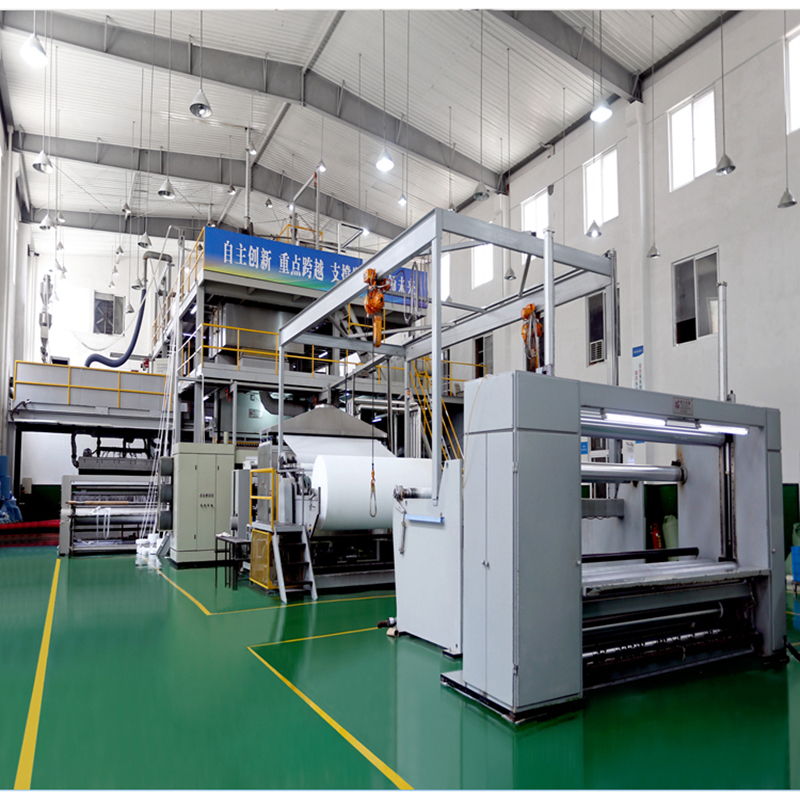Absolutely, fabric maker machines, especially those involved in non-woven fabric production, can be used to create specialty fabrics and unique designs.
These machines offer various capabilities that allow manufacturers to produce fabrics tailored to specific needs and designs:
- Customizable Properties: Fabric maker machines can create fabrics with tailored properties like thickness, strength, softness, absorbency, or specialized functionalities such as antimicrobial, fire-resistant, or conductive properties.
- Innovative Textures and Designs: They enable the creation of unique textures, surface finishes, patterns, and designs that might not be achievable through traditional weaving or knitting methods.
- Hybrid Fabrics: These machines can blend different materials or fibers, allowing the creation of hybrid fabrics with combined properties. For instance, blending natural and synthetic fibers for a fabric with the qualities of both.
- Precision and Consistency: Fabric maker machines can ensure precision in fabric production, maintaining consistency in texture, weight, and quality across production batches.
- Functionality and Performance Enhancement: Manufacturers can use these machines to develop fabrics with specific performance enhancements tailored for various industries or applications, such as automotive, medical, filtration, or apparel.
- Specialized Applications: Fabric maker machines cater to specialized applications by producing fabrics designed for unique purposes like high-performance sportswear, medical textiles, aerospace materials, or geotextiles.
- Fast Prototyping and Innovation: They facilitate fast prototyping, enabling manufacturers and designers to experiment with new materials, compositions, and designs, fostering innovation in the textile industry.
- Small-Scale Production: These machines can cater to small-scale, niche production runs, allowing for customization and flexibility without the need for large-scale manufacturing setups.
- Customization for Fashion Industry: In the fashion industry, fabric maker machine fabric maker machines can create textiles that meet specific fashion designer requirements, enabling the production of exclusive or high-end fabrics for unique designs.
The versatility and adaptability of fabric maker machines, particularly in the non-woven sector, provide manufacturers with a wide array of possibilities to produce specialty fabrics and innovative designs that cater to diverse industries and niche markets.
What factors influence the speed and output capacity of fabric maker machine?
Several factors influence the speed and output capacity of fabric maker machines, affecting their production efficiency. Some key factors include:
- Machine Type and Design: The specific type and design of the fabric maker machine play a significant role. Different machines have varying capabilities and operational speeds based on their mechanisms, technology, and configurations.
- Raw Material Characteristics: The properties of raw materials used, such as fiber type, length, thickness, and quality, can impact the machine’s speed and efficiency. Some materials might require specialized handling or processing, affecting the output capacity.
- Machine Size and Configuration: The size, width, and configuration of the machine, such as the number of production lines or workstations, can determine the output capacity. Larger machines with multiple lines often have higher production capacities.
- Process Complexity: The complexity of the production process, including the number of stages involved (carding, bonding, finishing, etc.), influences the speed at which the machine can produce fabrics.
- Production Speed Settings: Adjustable speed settings on the machine allow operators to control the production rate based on the fabric type, quality standards, or specific requirements, affecting the overall output capacity.
- Maintenance and Downtime: Regular maintenance schedules and downtime for maintenance activities can impact the overall production output. Well-maintained machines typically operate more efficiently.
- Automation and Technology: Machines equipped with advanced automation, robotics, or digital technology often have higher production speeds and capacities due to improved efficiency and reduced manual intervention.
- Quality Control Measures: Stringent quality control processes, including inspection, testing, and adjustments, can affect the production speed as they might slow down the overall process but improve the quality of output.
- Operator Skill and Training: The expertise and proficiency of machine operators play a role in optimizing the machine’s performance. Well-trained operators can maximize production efficiency.
- Energy Efficiency: Machines designed for energy efficiency and optimized resource utilization might impact the speed and output capacity while reducing operating costs.
Balancing these factors and optimizing their interplay is crucial for maximizing the speed and output capacity of fabric maker machines while maintaining quality, efficiency, and reliability in fabric production.

